The Bronze Age and Ancient Greece
1/19
There's no tags or description
Looks like no tags are added yet.
Name | Mastery | Learn | Test | Matching | Spaced |
|---|
No study sessions yet.
20 Terms
Acropolis
The citadel or fortress of an ancient Greek city, typically built on a hill
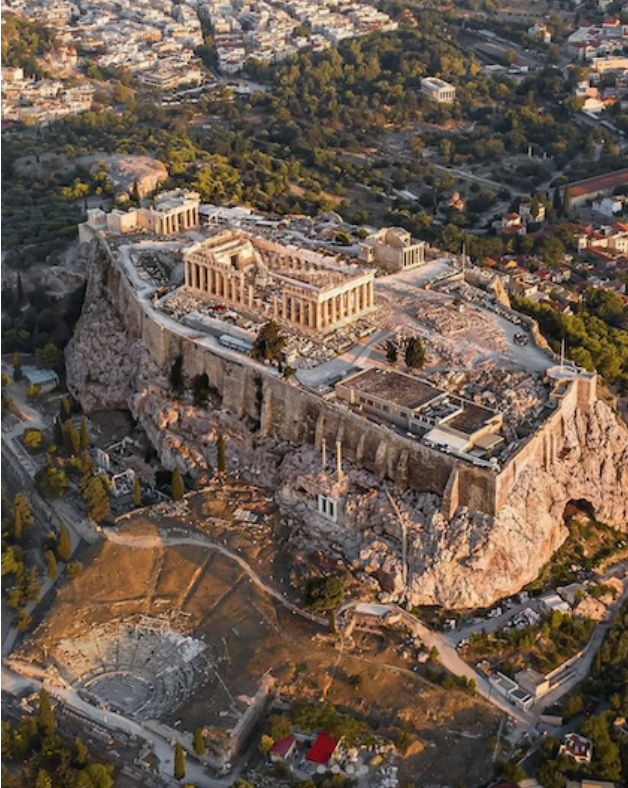
Contrapposto
a way of representing the human body so that the weight appears to be supported on one leg. Contrapposto was discovered by ancient Greek sculptors and rediscovered by Renaissance artists in Europe.
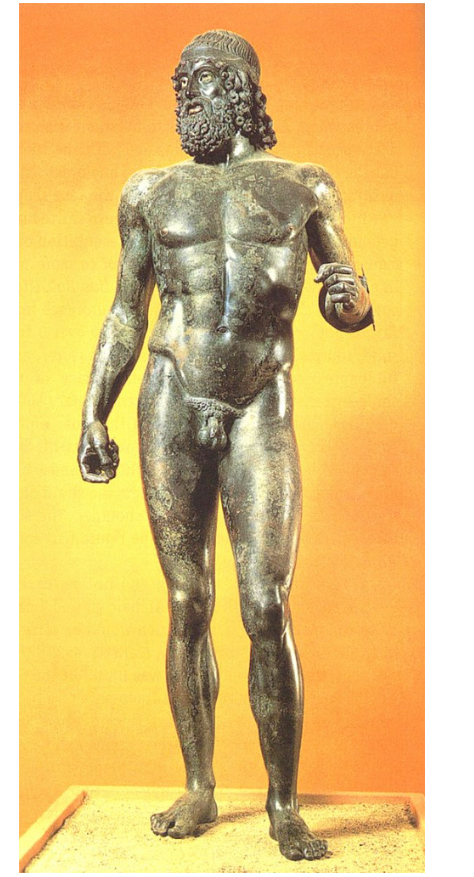
Verism
Verism=intensely candid, superrealistic approach to portraiture
Verus in latin=” true.” A style of portraiture that attempts to depict a truthful likeness of an individual. Etruscan and Roman sculptors working in the veristic style faithfully represented their subjects’ imperfections, such as wrinkles, warts, and baldness
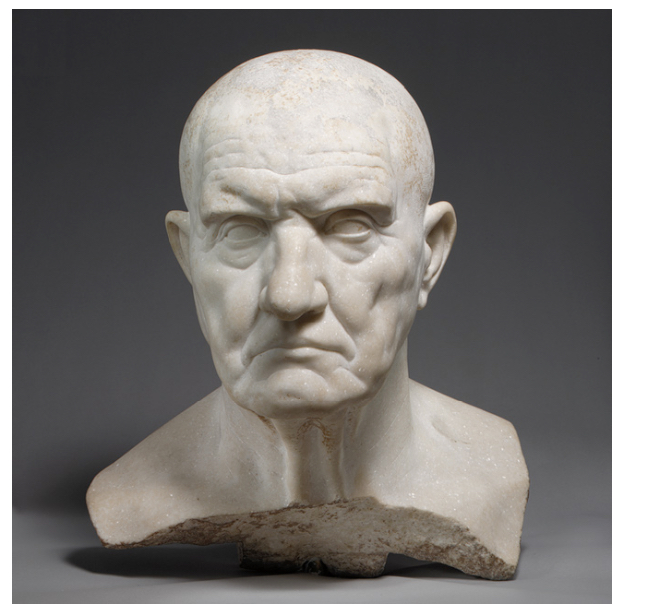
Iconography
The study of the significance and interpretation of the subject matter of art.
Equestrian statue
A statue depicting a rider on a horse, often commemorating notable individuals, commonly seen in Roman art.
Adlocutio gesture
arm raised in greeting or speech
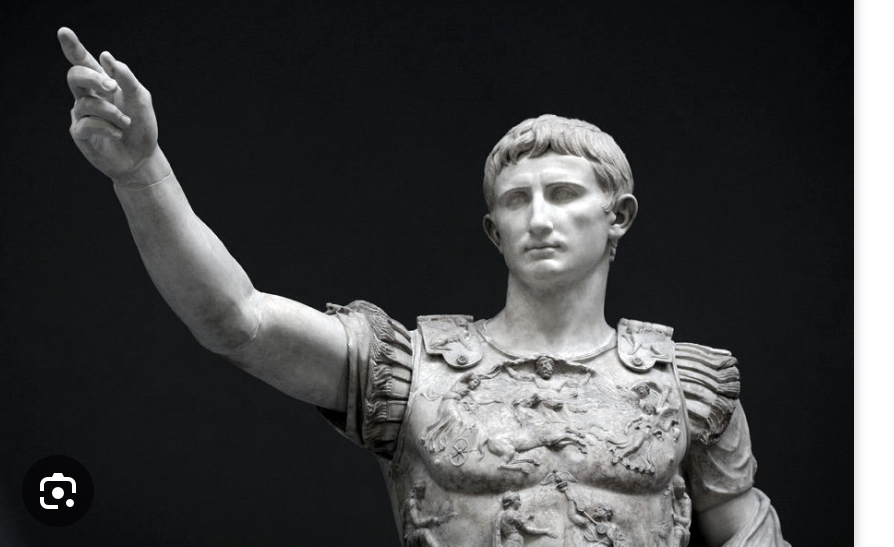
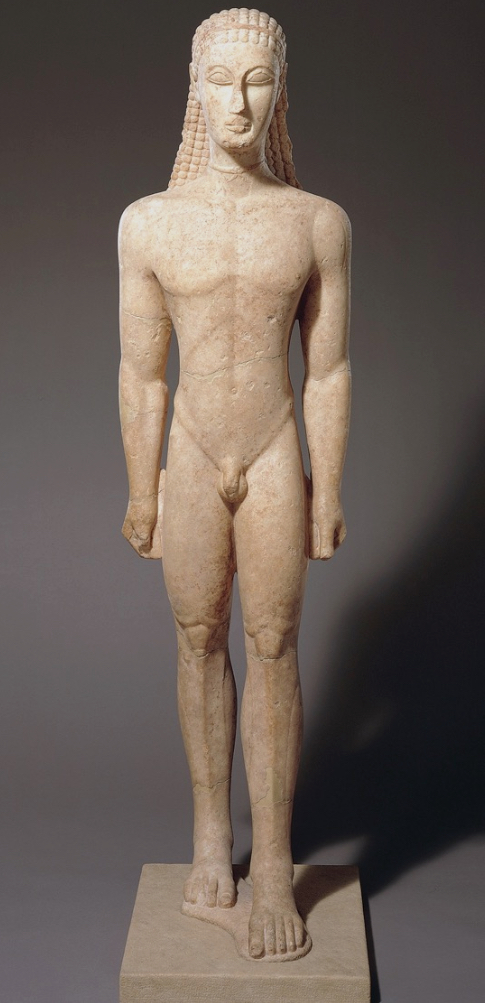
Kouros (Youth), 6th century BCE (Ancient Greece)
these are usually used as memorials
typically representing male youths in a standing posture and are naked. Women ones aren’t naked.
kid
Kouroi are often used as grave markers, typically representing idealized male youths standing in a naturalistic posture, often without clothing. Female counterparts are referred to as "kore" and typically depicted clothed.
this was made in a time when greece was more stable
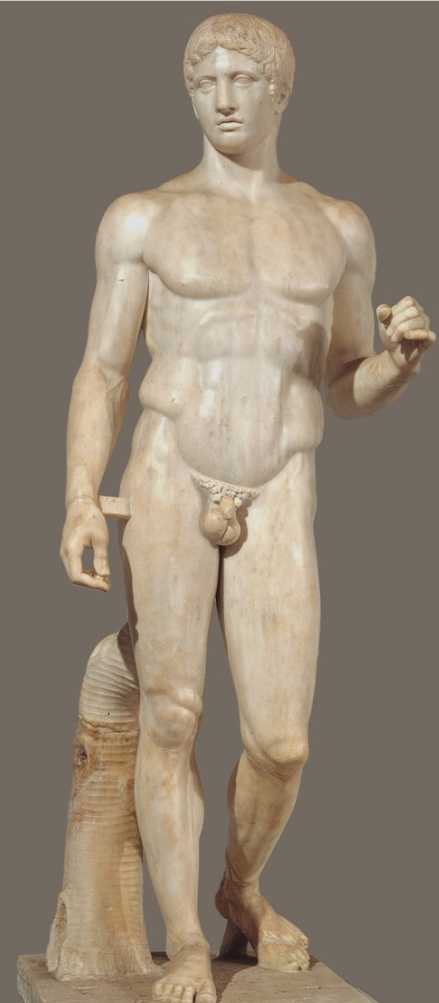
“Spear Bearer” (Doryphorus), by Polykleitos, Roman copy of bronze original, 5th century BCE (Ancient Greece)
the pose is contrapposto
has canon of proportions (the body is a perfect male body)
The author Polykleitos famously created the ideal proportions of a man
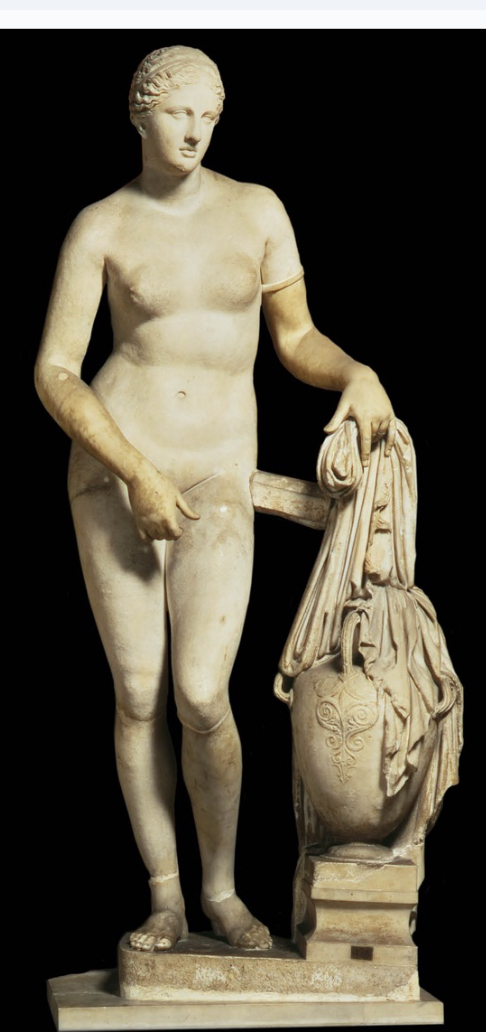
Aphrodite from Knidos, Roman copy of marble statue by Praxiteles, [one of many] 4nd century BCE (Ancient Greece) Greece
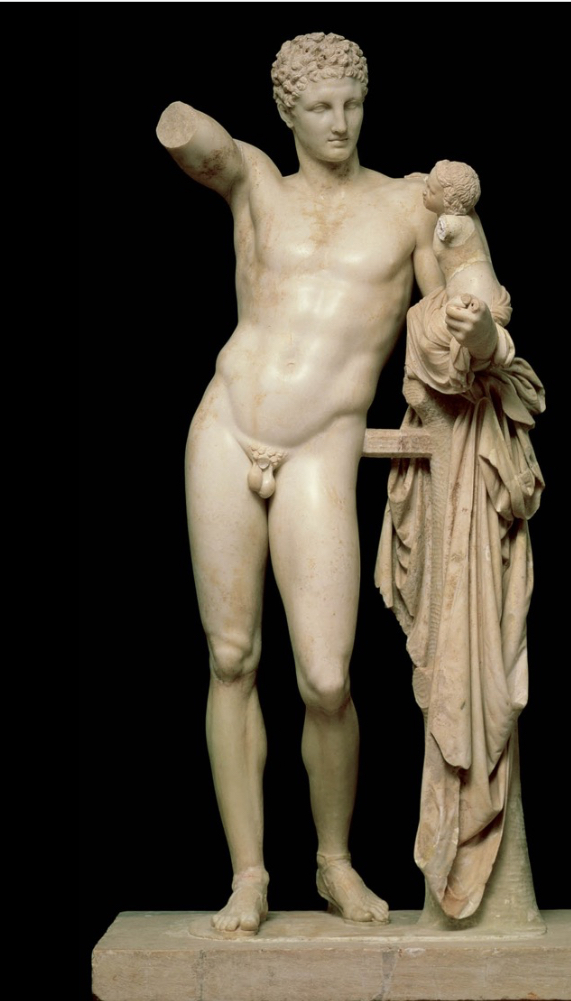
Hermes and Dionysos, by Praxiteles follower, 4th century BCE (Ancient Greece)
proportions of the body are more slender and look longer.
less balanced, he’s moving and doing stuff
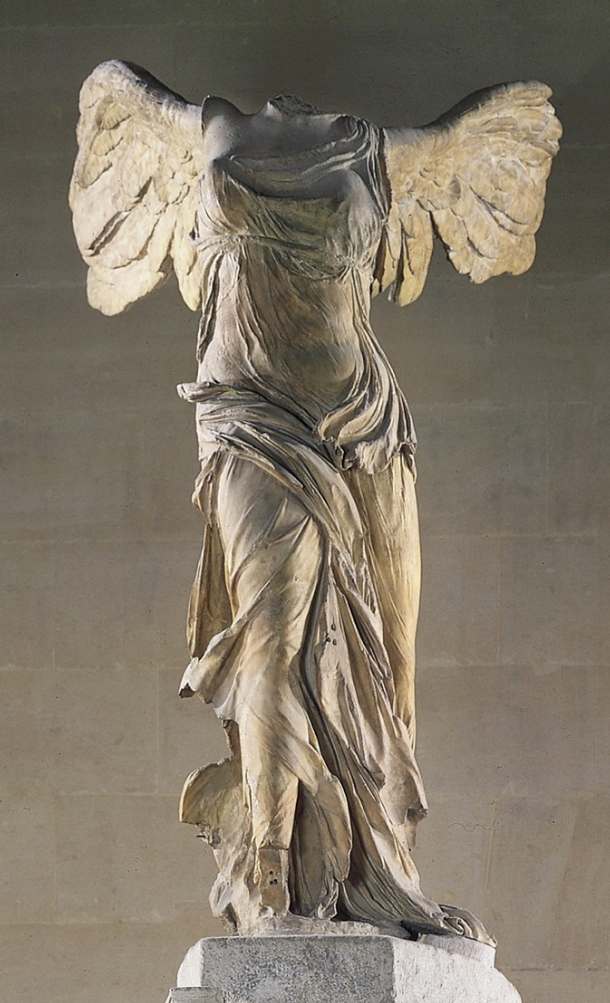
Nike of Samothrace, 2nd century BCE (Ancient Greece)
a figure that represents victory
representing not just the body but also wind and water
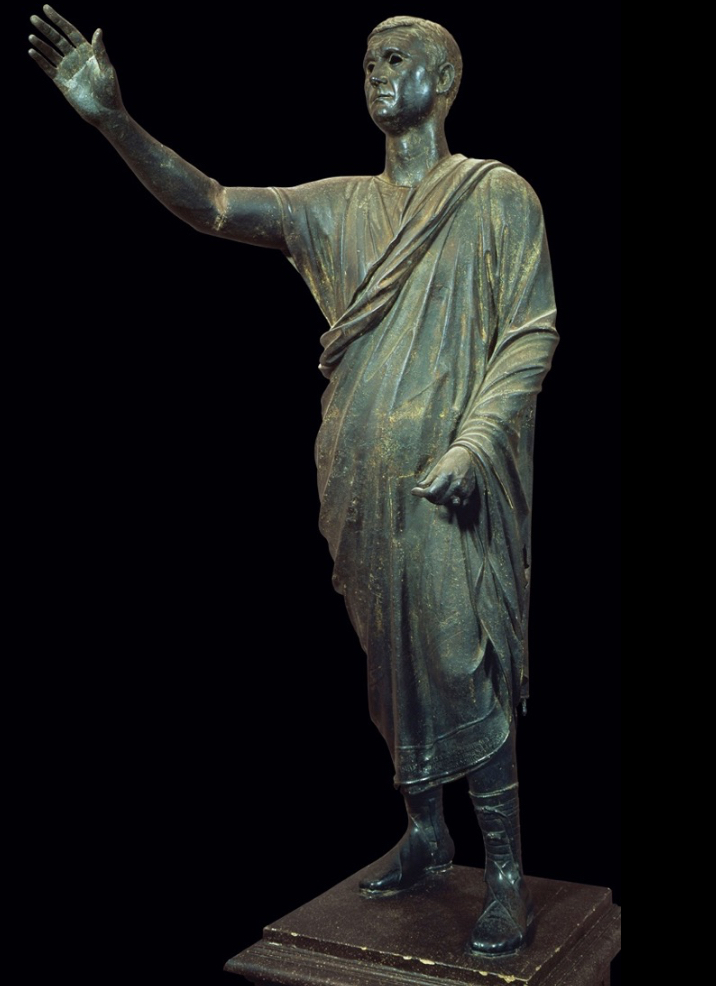
Aule Metele, c. 100 BCE (Etruscan or early Roman)
standing in contrapposto
he’s speaking to ppl, can tell by his gesture
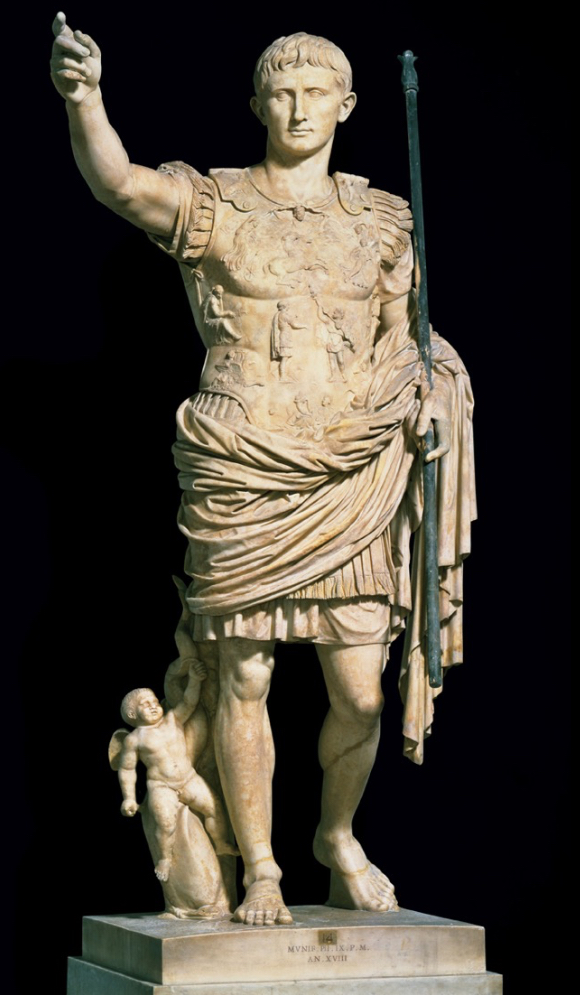
Augustus as general (Augustus of Primaporta) late 1st century BCE/early 1st century CE (Ancient Rome)
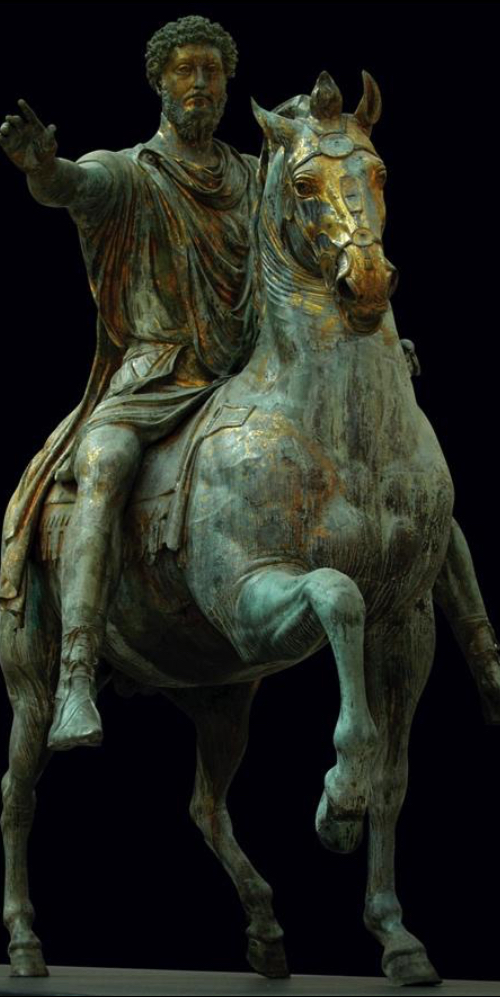
Equestrian statue of Marcus Aurelius, 2nd century CE (Ancient Rome)
Polis or city states
a city-state in ancient Greece
Apsidal
an apsidal structure ends in a semicircle on one side
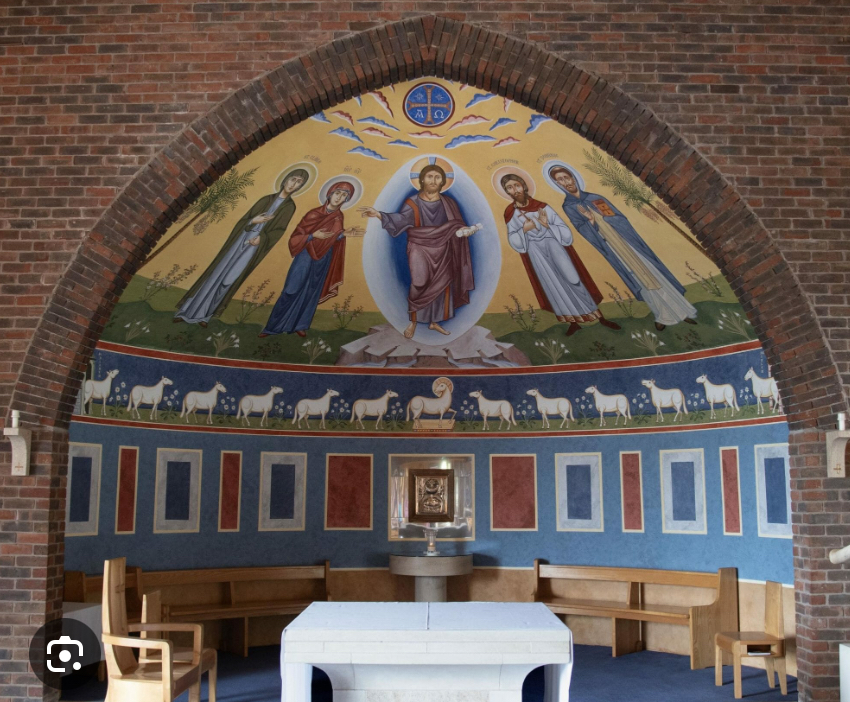
John Wincklemann
18th century
German scholar who wrote books about Greek and Roman art. 1st to write about the history of the art of the objects and not the artists.
He is considered the father of art history.
He mostly saw copies of Greek sculptures
he talked abt the whiteness. white=color of virtue
he didn’t know that the sculptures weren’t originally white.
Compare and contrast: Kouros vs. Mentuemhat
Kouros is an ancient Greek statue representing a youth, often depicted standing nude, while Mentuemhat is an Egyptian statue of a high official, fully clothed. Both serve as representations of their respective cultures' ideals of youth and authority, but Kouros embodies Greek ideals of naturalism and beauty, whereas Mentuemhat reflects the Egyptian emphasis on formality and permanence.
Similar: hands, very frontal, weight is balanced equally on both feet, difficult pose to maintain over time. Ideal image
Differences: one is clothed, one isn’t, mentuenhat had a back piece because it was made out of brittle material
Compare Hermes and Dionysos by Praxities to “Spear Bearer” by Polykleitos
Hermes and Dionysos proportions of the body are more slender and look longer. He is less balanced because he is moving and doing stuff.
Many surviving Greek sculptures are, in fact copies of
Roman originals